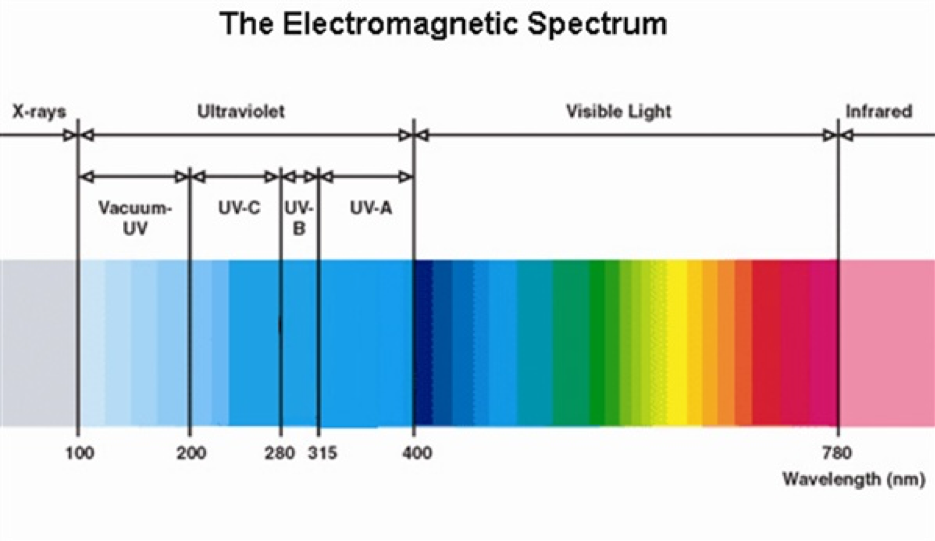UV lamps explained - (why any old lamp just won’t do!)
UV LAMPS EXPLAINED
Chemists recommend that you use the UV lamp supplied by the gel manufacturer. If you don't, in addition to less reliable nails, there is a risk of heat spikes and there is also a greater risk that you can develop an allergy.
Light has two components - wavelength which gives us different colours and brightness.
With UV lamps, there are two main wavelengths - 365 nanometers which cures older gels, and 405 nanometers which cures gel polishes and newer LED-UV gels.

Each UV lamp produces a different level of brightness - this has the scientific name of "UV Illuminance". That's because there is no industry standard, and because the brightness is affected by the type of light generation device used, how far this device is to the nails (brightness decreases with distance, we know this from using a torch outside), and also the quality of the reflectors.
The Wattage i.e. 36W, has no real impact on brightness. Watts indicate the amount of electricity used.
So if you test the brightness of 10 different 36W UV or LED-UV lamps, the brightness of all will be different. In the same way that 10 different 1000cc car engines produce different amounts of power and use different amounts of petrol.
Gel Chemistry is Super Complicated
If that is not complicated enough, different gels use different types and amounts of photoinitiator chemical. This is the chemical in the gel or gel polish that makes the product hard (polymerised) with UV light.
An analogy would be trying to bake bread with an unknown amount of yeast, in an oven whose temperature you can't control.
So when a chemist develops a new gel, they make this compatible with the UV lamp that the company sells. They test that the gel cures correctly and they will also measure the amount of exothermic heat produced during curing. If necessary they can reduce the amount of photoinitiator to make the gel curing cooler - but this will affect other features of the gel too.
If the company later wants to introduce a new UV lamp, it must have the same wavelength(s) and brightness as the original UV lamp, or all of the gels and gel polishes will have to be reformulated.
The cost and time to test all gels and gel polishes, is why serious brands only offer one type of UV lamp.
Increased Risk of Allergies
Now if you use a UV lamp that doesn't cure the gel correctly and the gel is under cured, that will produce under-cured gel dust when you file. This is now thought to be the #1 cause of nail product allergies - by experts such as the British Association of Dermatologists and other scientists.
This, and people using different brands of gels and gel polishes in unmatched UV lamps, are though to also be the reason why the number of reported allergies has increased dramatically the past years.
If someone develops a nail product allergy, it is for life and it makes them even more sensitive to developing other allergies. In addition, because similar acrylates are used in dentistry and some bone surgery, this can make some health treatments very difficult.


